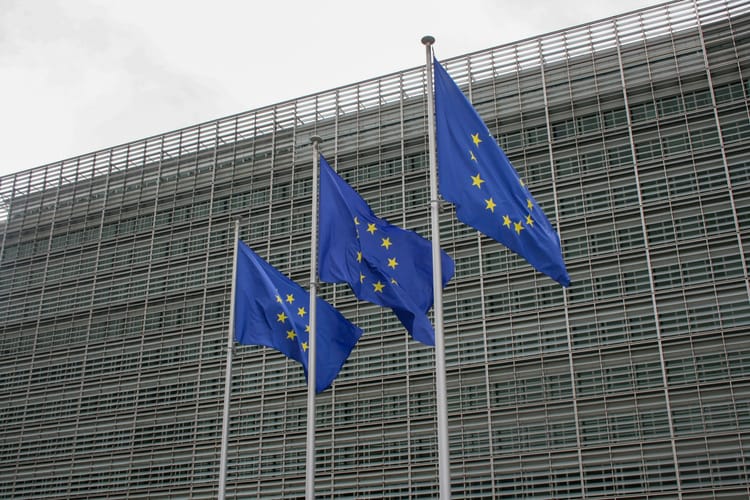Growth pains ahead for sustainable finance

What is driving record ESG fund outflows, and when will sustainable finance become the norm?
As of early September 2023, funds focused on Environmental, Social and Governance (ESG) investment were experiencing their fourth consecutive month of outflows, reaching a total of almost £2 billion of withdrawals. This is a remarkable change of pace, as according to fund network Calastone, before 2023 ESG funds had only seen one month of outflows since 2019. Given that the world needs an estimated US$100 trillion of investment by 2050 to achieve net zero, this change of pace is worrying.
An economic downturn and lower rates of return may be partially to blame, as investors are moving back to “safer” money market funds. But the sudden loss of popularity of ESG funds could also be explained by the wide-ranging overhaul happening in sustainable financial markets.
“Sustainable finance is at a bit of a crossroads. If you think back a few years, it was all guns blazing, everyone doing it one way or another. I think we’ve now reached the level of maturity where some questions are being asked, and probably rightly so,” Cornelia Anderson, Head of Sustainable Finance and Data Analytics at the London Stock Exchange Group, told the audience at Sustainability Live London this September.
Investors are now wondering whether this type of investment is actually generating the impacts and returns they expected – and lacking the data to prove it. That is leading to “a bit of a retraction”, she added: record ESG fund outflows.
A regulation tsunami
The proliferation and increasing granularity of sustainable finance regulations and standards may also have something to do with this reckoning. Regulators are clamping down on greenwashing in all sectors of the economy, and finance is certainly not immune: the US$25 million settlement paid at the end of September by the Deutsche Bank-controlled investment fund DWS to end the Securities and Exchange Commission’s probe into its ESG policies is a clear example.
In the EU, financial institutions have had to comply with the Taxonomy Regulation since 2020 and the Sustainable Finance Disclosure Regulation (SFDR) since 2021. The former is a classification system that identifies which activities can be considered sustainable; the latter requires asset managers to disclose how ESG factors are integrated at both an entity and product level.
Similar legislation is being adopted in the US, where the Securities and Exchange Commission (SEC) has proposed an amendment to its Name Rule that would require any fund advertising itself as ESG or sustainable to focus at least 80% of its portfolio into corresponding assets. Meanwhile in the UK, the Financial Conduct Authority is set to publish the final Sustainability Disclosure Requirements by the end of the year. These will cover “sustainable investment labels, disclosure requirements and restrictions on the use of sustainability-related terms in product naming and marketing”.
It’s fair to say sustainable finance regulation is still finding its feet, and the next couple of years will see a number of updates and adjustments. For instance, the European Commission recently opened a consultation for the revision of SFDR requirements, with the purpose of providing more legal certainty and improving the regulation’s impact on greenwashing.
In short, it is no longer okay to categorise an investment as “sustainable” without being able to prove it (or worse, to channel funds labelled as “ESG” towards fossil fuels) – but it’s not entirely clear yet what constitutes sufficient proof. Until it is, investors may consider it safer to stay away from ESG claims.
“Today the financial sector [in Europe] is focused on the Taxonomy with its six objectives, the European Banking Authority’s Pillar III disclosures, SFDR, the European Climate Law and of course the new Corporate Sustainability Reporting Directive, as well as the TCFD [Task Force on Climate-Related Financial Disclosures] and TNFD [Task Force on Nature-Related Financial Disclosures],” said Tomás Conde, ESG and Sustainable Finance Director at consultancy NWorld and formerly the first Chief Sustainability Officer to be appointed at Spanish bank BBVA.
The TCFD and TFND are just two of a flurry of voluntary industry standards and guidance governing sustainable finance activities. Others include ISO 32210 on the application of sustainability principles for organisations in the financial sector, the IFRS Sustainability Disclosure Standards published in 2023 and the Global Reporting Initiative (GRI)’s upcoming Sector Standards for financial services. This last one will even be divided into three separate standards: one for banking, one for insurance and one for capital markets.
“Currently this is a real mess, though in a couple of years it will be much clearer,” Conde told CSO Futures, adding that firms must work now to become eligible under these new standards.
Better data and interoperability needed
One of the biggest challenges in making the world – not just the financial sector – more sustainable is in finding and collecting the right data. “The basis for all decision-making in financial services is data, and the data around sustainability is still emerging, so it’s right that we take a little bit of a pause to ask tough questions,” said Anderson.
New laws requiring companies to disclose their environmental and social performance to investors should help. In the EU for example, almost 50,000 large and/or listed companies will have to report sustainability under CSRD from the 2024 financial year. This looming deadline is forcing businesses to look much more closely at the sustainability data they already have, and to bridge whatever gaps may exist.
The European Sustainability Reporting Standards (ESRS), developed alongside CSRD, will harmonise how this data is communicated within the EU, but translation may remain necessary to make it work across other regulations and standards. This article on the application of the Carbon Border Adjustment Mechanism looks at this issue in more detail.
Interoperability is a key priority, and luckily new standards are starting to align themselves with existing guidance: IFRS standards, for example, are both based on TCFD recommendations. But it will still take some work for all these guidelines and regulations to work together smoothly.
“[Standards and regulations] should be fully interoperable but they don’t quite fit yet. This will require additional resources as well as more clarification and perhaps more specific rules from the issuers of these regulations. The financial sector rightly complains that there is a lack of clarity, concreteness and templates,” noted Conde.
In the end, it all boils down to one thing: for financiers to turn their attention fully to sustainability, they need to understand the business case and see the potential for returns – and at the moment, most of them do not. “There’s a lot of traditional investors that don’t care about impact yet, and I would say that’s the majority of VCs, even those that call themselves impact VCs: their main criteria is still profitability. It’s important for businesses to develop a way for impact and profits to be aligned, because no one wants to give up profit,” pointed out Sören Müller, COO of WATER150, an organisation looking to improve access to drinkable water through blockchain, at Sustainability Live London.
This simple conflict of interest may explain why banks and asset managers continue to pour billions of dollars into fossil fuels and other highly polluting industries, despite their net zero goals. The lag between ambition and action in the financial sector risks hindering corporate decarbonisation as a whole.
The 2022 Carbon Bankroll report analysed emissions from corporate cash and investments within the banking system to highlight how “companies’ climate accomplishments are being undermined by a misaligned financial system that is channelling hundreds of billions of corporate US dollars into the carbon-intensive sectors driving the climate crisis”. It found that for Microsoft for example, the emissions generated in 2021 by the company’s US$130 billion in cash and investments were comparable to the cumulative emissions generated by the manufacturing, transporting, and use of every Microsoft product in the world.
Still, sustainable finance professionals like Conde are hopeful that the alignment between sustainability and profits is coming. He concluded: “In the future, I see ESG 100% integrated into financial and regulatory reporting. This is not about telling stories; it’s about numbers and financial materiality: measuring, managing, pricing policies and risks. They will be formulated exactly the same as the rest of the annual reports and will be audited like the rest of annual reports and the ratings will be done only by the credit rating agencies (Moodys, Fitch, S&P, DBRS). The key word in ESG is integration.”







Member discussion